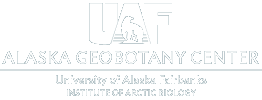About LCLUC Yamal
Examining the interactions between sea-ice, climate, permafrost and social ecology of the Yamal Peninsula, Russia
This NASA Land-Cover and Land-Use Change (LCLUC) project undertakes a synthesis of remote-sensing studies, ground observations and modeling to understand the social-ecological consequences of climate change and resource development on the Yamal Peninsula, Russia and relevance to the circumpolar Arctic. As part of the study, a research transect has been established along the Eurasia Arctic bioclimate gradient to examine the interactions between sea-ice, climate, permafrost and the social ecological systems of the region.
Along this transect, researchers are using remote-sensing technologies to examine how the terrain and anthropogenic factors of reindeer herding and resource development, combined with the climate variations on the Yamal Peninsula, affect the spatial and temporal patterns of permafrost and vegetation change and how those changes are in turn affecting traditional herding by indigenous people of the region.
The Eurasia Arctic Transect traverses the five Arctic bioclimate subzones of the Yamal Peninsula and Franz Josef Land of Russia. It offers a maritime comparison to the more continental North America Arctic Transect.
The work is also part of the Northern Eurasia Earth Science Partnership Initiative (NEESPI). It addresses the NEESPI science questions regarding local and hemispheric effects of anthropogenic changes to land use and climate in northern Eurasia.
Funded by NASA Grant No. NNG6GE00A and NNX09AK56G.
Get In Touch
The Alaska Geobotany Center is located on the West Ridge of the University of Alaska Fairbanks campus. Our office is located in room 252, on the second floor of the Arctic Health Research Building.
